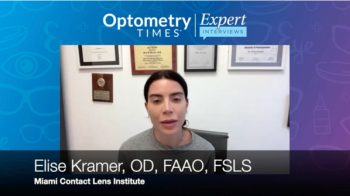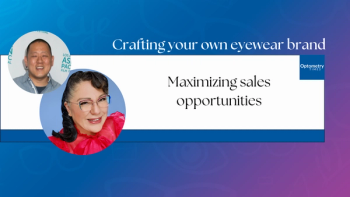
Clinical answers for improving a patient’s 3D viewing experience
Are 3D movies not only box office blockbusters, but also an emerging public health opportunity for optometry? As 3D and stereoscopic 3D (S3D) become more common in movies and television, video games, mobile devices, and in the classroom and the workplace, many people will discover that they can’t appreciate this new technology because of vision problems.
Are 3D movies not only box office blockbusters, but also an emerging public health opportunity for optometry? As 3D and stereoscopic 3D (S3D) become more common in movies and television, video games, mobile devices, and in the classroom and the workplace, many people will discover that they can’t appreciate this new technology because of vision problems.
An estimated 3 million to 9 million people in the United States have binocular vision problems; viewing 3D television and movies may make them aware of these problems and encourage them to seek treatment, according to Leonard J. Press, OD, FCOVD, FAAO, a developmental optometrist in Fair Lawn, NJ.
“Not only are we seeing changes in terms of media, but more and more jobs are requiring 3D,” said Gary Etting, OD, FCOVD, of Los Angeles. Drs. Press and Etting discussed the clinical implications of viewing 3D media.
‘More careful’ evaluation
They urge their colleagues to brush up their skills to prepare for more patients coming in with 3D-vision problems. “You don’t have to become a developmental optometrist or provide vision therapy in your office,” Dr. Etting said. “But you need to be more careful in your evaluation to make sure that you’re looking for these potential problems.”
The most common visual problems associated with S3D technology are discomfort, dizziness, and lack of depth. Testing phoria, vergence ranges, amplitude, lag, facility, AC/A ratios, and visual stress are key to evaluating accommodative-vergence interaction.
“The more testing you do, the better insight you’ll get into how well equipped your patients’ binocular and accommodative system is to handle this visual event,” Dr. Press said. “Dust off your old optometry notes from school, buy a book, take a course.”
Using clinical guidelines
The American Optometric Association (AOA) has published clinical guidelines on accommodative-vergence interaction. In addition, the AOA recently co-sponsored a 3D vision and eye-health symposium and helped prepare a public health report on 3D in the classroom.
The guidelines include a list of questions for evaluating the impact 3D viewing can have on vision and eye health.
- Do you experience eyestrain or headaches during or after viewing?
- Do you feel nauseated or dizzy during or after viewing?
- Are you more comfortable viewing 2D TV or movies instead of 3D TV/movies?
- Is it difficult for your eyes to adjust back to normal after watching 3D TV/movies?
- Do other people seem to be enjoying the 3D viewing experience more than you?
Treatment options and goals
Many treatment options are available to patients who have vision problems that may affect 3D viewing, according to Dr. Etting. If an updated prescription doesn’t alleviate the problems, a prescription specific for the task of sustained 3D viewing is an option. For example, Marchon offers 3D eyewear with circular polarization.
Other equipment used to tailor treatment or vision therapy to the patient’s needs may include therapeutic lenses, prisms, filters, occluders or patches, electronic targets with timing mechanisms, and balance boards.
Treatment goals include getting patients comfortable moving their eyes from far to near spaces and building degrees of freedom in a binocular system by stretching the relationship between the focus and the point of the eyes, Dr. Etting said. “In short, we’re trying to arrange the conditions for them to learn to use their equipment in a more efficient way,” he said.
Fine-tuning the 3D experience
The doctors also offer a few tips for fine-tuning the 3D viewing experience. For example, pick a viewing angle within 30 degrees of center. This applies to television, movies, and handheld devices. If you’re in a theater, choose a seat toward the center rear. The screen should occupy about half of your visual field.
While some people believe 3D is a passing fad, Dr. Press is convinced otherwise. He pointed out that the first 3D eye clinic opened in Beaverton, OR. The clinic is operated by Pacific University College of Optometry, Forest Grove, OR, and has significant industry support, Dr. Press said. This suggests that the clinic’s corporate backers believe 3D will be a major force not just in the entertainment industry but also in other aspects of everyday life.ODT
5 questions to ask about 3D viewing
Here’s what to ask your patients about their 3D viewing habits, according to AOA clinical guidelines:
- Do you experience eyestrain or headaches during or after viewing?
- Do you feel nauseated or dizzy during or after viewing?
- Are you more comfortable viewing 2D TV or movies instead of 3D TV/movies?
- Is it difficult for your eyes to adjust back to normal after watching 3D TV/movies?
- Do other people seem to be enjoying the 3D viewing experience more than you?
Newsletter
Want more insights like this? Subscribe to Optometry Times and get clinical pearls and practice tips delivered straight to your inbox.













































